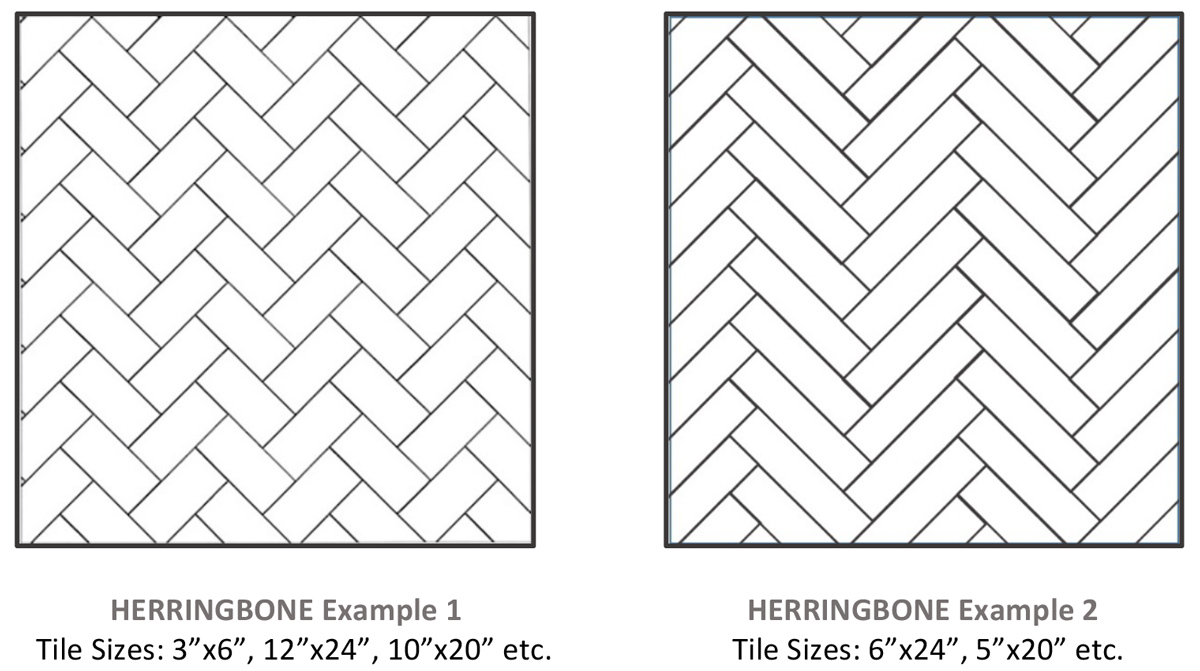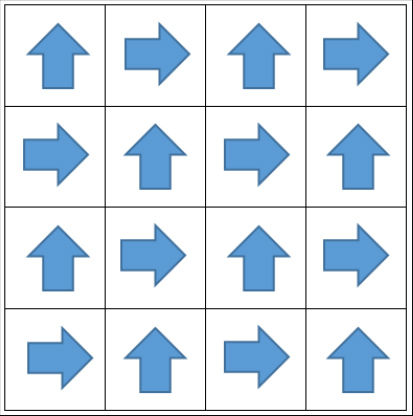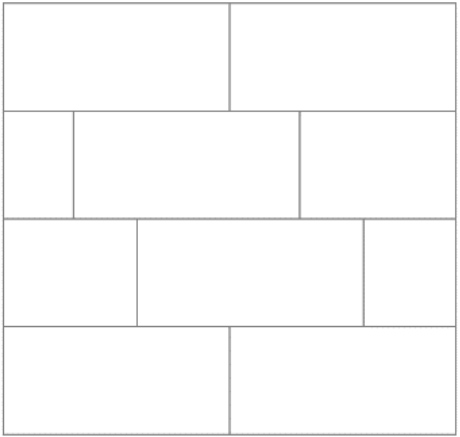A
- Above-grade
-
Refers to an area where flooring will be installed that is above ground level.
- AC Rating
-
AC Rating is a rating standard for laminate flooring. For a breakdown of the AC ratings SEE BELOW.
- AC Class 1 Rating: Residential, light foot traffic (ex: bedrooms)
- AC Class 2 Rating: Residential, light foot traffic (ex: bedrooms, dining rooms, living rooms)
- AC Class 3 Rating: Residential, light to moderate food traffic (all residential areas)
- AC Class 4 Rating: Residential, Light-Moderate Commercial (ex: small retail settings, offices)
- AC Class 5 Rating: Residential, Moderate-Heavy Commercial (ex: department stores, restaurant seating areas)
B
- Below-grade
-
Below-grade refers to an area where flooring will be installed that is below ground level. This is an important factor to consider as often times if your flooring is being installed below-grade it can affect the moisture levels.
- Beveled Edge
-
Beveled Edge is an angled edging available on some tiles, creating a “framed” look.

- Brick Pattern
-
See ‘Staggered’
E
- Efflorescence
-
Efflorescence is a factor that can discolor your grout. Water can leave an efflorescence on the surface of your grout, which is created from the salt in the water rising to the surface once the water dries.
H
- Herringbone
-
An installation method most often used in ceramic and porcelain tile installation. The herringbone installation uses 45° angles throughout, rotating tile from left to right. You can install this pattern using a variety of tile sizes, SEE IMAGES below for examples.

I
- Interlocking
-
A flooring installation method that enables you to have a ‘floating-floor’. Interlocking mechanisms allow the flooring to click, or slide together without having to adhere them to the floor. Most often found in laminate, and vinyl-click flooring.
L
- Lappato Finish
-
A semi-polished tile finish on unglazed porcelain tile
- Luxury Vinyl Tile/Plank
-
Luxury Vinyl Tile/Plank is a product that offers the most realistic stone, tile and wood visuals in alternate flooring. Luxury vinyl tile and plank are made of vinyl, and vinyl composites- they are extremely durable, and warmer than a ceramic or porcelain installation.
P
- P.E.I Rating
-
P.E.I Rating (Porcelain Enamel Institute): a rating given to tiles to reflect the durability of a tiles porcelain enamel. The ratings range from 1 to 5, for a break-down of each rating SEE BELOW.
- PEI Class 1 Rating: Wall tile, this tile cannot be used with any foot traffic, this tile can be used on wall applications in residential and commercial settings
- PEI Class 2 Rating: Wall tile, and light foot traffic (Soft-footed areas such as; washrooms)
- PEI Class 3 Rating: Wall and light to moderate foot traffic, residential applications
- PEI Class 4 Rating: Wall and moderate to heavy foot traffic, residential and light to medium commercial applications
- PEI Class 5 Rating: Wall and heavy foot traffic, residential to heavy commercial applications.
- Plywood
-
Plywood is a wooden board made of two or more layers of wood with the grain running in opposite directions from one layer to the next. Plywood is commonly used for subfloors, and can be purchased in a variety of thicknesses- it is important to ensure you are using the appropriate plywood for your flooring installation.
Plywood is also found in Engineered hardwood. Engineered hardwood is made with a wood top layer giving the hardwood visual, and a plywood back –enhancing the durability and making it less susceptible to expansion and contraction.
Q
- Quarter-turn
-
Quarter-turn is an installation method most often used with carpet tile, where the tiles are rotated a quarter turn with each tile installed. This method not only creates a great visual, it also prevents the visual of unsightly seam lines and edge to edge shading.

R
- R Value
-
‘R’ Value is a measure of thermal resistance
- Rectified Edge
-
When tiles have near-perfect flat edge, created by ground or machined edges. These edges allow for a smaller grout joint.
- Reducer
-
Reducer finishes edge between flooring and other hard surfaces. Reducers can be made of wood, vinyl or metal. SEE IMAGES BELOW.

- Resilient
-
Resilient is a term that can often group a large category of flooring products together, usually defining the products found between soft flooring types (such as carpet), and hard flooring types (such as hardwood, laminate and tile). On our website we have defined the category of resilient flooring even further, separating Vinyl Sheet, and Luxury Vinyl Tile/Plank, and using our ‘Resilient Flooring’ section to showcase our Commercial Rubber, VCT, and Solid Vinyl products.
S
- Shade Rating
-
Shade Rating (Colour shade variation): tiles are given a shade rating, which provides an idea of the variation in colour and patterning in the series of tile. SEE GUIDE BELOW.

The colour shade or shades of all tile varies some degree from piece to piece, from each production run to run. At least several pieces from the same production run should be reviewed whenever possible to determine acceptable colour shade variations. Any questions or concerns about your tile selection should be clarified prior to installation.
- V1 – Uniform Appearance: Differences among pieces from the same production run are minimal.
- V2- Slight Variation: Clearly distinguishable differences in texture and/or pattern within similar colours.
- V3- Moderate Variation: While the colours present on a single piece of tile will be indicative of the colours to be expected on the other tiles, the amount of colours on each piece may vary significantly. For example “that little bit of colour” on one piece of tile may be the primary colour on the next piece.
- V4- Random Variation: Random colour differences from tile to tile, so that one tile may have totally different colour from that on the other tiles. Thus, the final installation will be unique.
- Staggered
-
Staggered: an installation method most often used when installing ceramic or porcelain tile. In this method tiles are staggered 1/3rd from one piece to the next. It is suggested to install tiles 1/3rd staggered and NOT 1/2 to prevent having the lowest part of a tile (the tile edges) and the highest part of a tile (the tile centre) installed next to each other. SEE IMAGE.

- Stair-nose
-
Stair-nose (Stair-nosing): finishes edge of flooring at stairs. Stair-nose can be made of wood, vinyl or metal. SEE IMAGES BELOW.

- Subfloor
-
Subfloor is the structural floor which is at the base of your flooring installation. The subfloor is often the product that is attached directly to the floor joists, although it may also refer to a concrete slab floor. It is important to know which subfloor is recommended for your flooring installation, or which steps are recommended, if any, when working with a certain subfloor over another.
- Substrate
-
Substrate can refer to any flooring layer lying underneath another.
T
- T-Mold
-
T-Mold finishes the gap between level flooring areas. T-molds can be made of wood, vinyl or metal. SEE IMAGES BELOW.

U
- Underlayment
-
Underlayment is a very important layer to your overall flooring installation. Most commonly used in carpet and laminate installation (SEE ‘Carpet Underpad’, and ‘Luxury Vinyl Tile Underlay’). It is important to use the correct underlayment for your project.
- Urethane
-
Often time’s floors will be given a urethane coating to help with the overall durability and longevity of a product. Some products, such as cork, can require a re-coating of urethane over time.
V
- VOCS
-
VOCS (Volatile Organic Compounds) are organic compounds that have boiling points roughly in the range of 50 to 250 °C (122 to 482 °F). Due to their high boiling points, VOCS can often have an effect on air quality, creating ‘off-gassing’. Our manufacturers follow practices to ensure our products emit little to no VOCS.
W
- Wear layer
-
The wear layer is the layer on vinyl flooring that provides the strength and durability for long-lasting wear. Generally speaking, the larger the wear layer the stronger the floor. The wear layer is the top-coat of vinyl products, measured in mils (thousandths of an inch), it can be made from any of the following; urethane, no-wax vinyl, or enhanced urethane products. When choosing your flooring keep in mind what you will be using for a residential washroom would need much less of a wear-layer than a product going in a heavy traffic commercial building.
